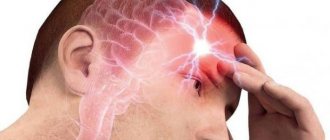Unfortunately, sudden changes in blood pressure are an unpleasant phenomenon that can first appear in a person at any age. The amount of blood pressure depends on the time of day, fatigue, what a person ate and drank, on his psychological and emotional state, and on weather conditions. And, if the problem of pressure surges has entered the system and become habitual, it is worth sounding the alarm and taking measures to stabilize the pressure.
For a healthy average person, a blood pressure of 120/80 is considered normal. However, for each specific person this figure is quite individual and can fluctuate within certain limits, being considered the norm, if, of course, the person feels cheerful and healthy.
If the pressure constantly fluctuates, this is definitely considered a deviation from the norm. Modern clinical research confirms that even a slight increase in blood pressure, if it occurs regularly, increases the likelihood of cerebral stroke and other serious diseases.
Why does blood pressure increase with dystonia?
The main factor in increased blood pressure in people with VSD is usually a malfunction of the sympathoadrenal system. It consists of the adrenal glands and the sympathetic division of the autonomic nervous system. This is our weapon in times of stress. When we need to get together and act quickly, we are helped by the release of adrenaline and an increase in the tone of the sympathetic nervous system. In autonomic dysfunction (VSD), this mechanism is disrupted. In tense moments, the excitement can be too strong, and instead of doing any good, it can completely incapacitate the person. A very minor reason can cause an inappropriately strong reaction to stress. Vascular tone increases and blood pressure rises.
Vegetative-vascular dystonia: symptoms, diagnosis, treatment
Are you worried about pain in the heart area? Having trouble taking a breath? Feeling dizzy? Are your hands shaking and your stomach churning?
Neither an ECG, nor an MRI, nor all kinds of tests revealed any serious pathology. Is the patient really a malingerer?
Not at all. Everything he feels is real. The disorder that we will discuss today has more than a hundred manifestations. However, often (not always, but often) an attempt to find its “material” basis is unsuccessful.
With questions about what vegetative-vascular dystonia is and how to treat it, we went to see a neurologist, leading specialist in the neurology department of the Expert Clinic Kursk, Natalya Vladimirovna Umerenkova.
- Natalya Vladimirovna, many have heard the name “vegetative-vascular dystonia”. But does such a diagnosis really exist from the point of view of world medicine?
No. This formulation is found exclusively in the post-Soviet space. Of course, this does not mean that patients are making up their complaints - they are very real. However, formally, in the form of a diagnosis, VSD does not exist.
Does osteochondrosis exist? Radiologist at MRI Expert Elets says:
Yavorsky Evgeniy Valerievich
- What symptoms are they talking about when they mean vegetative-vascular dystonia?
Figuratively speaking, it is probably easier to name signs that do not occur in vegetative-vascular dystonia.
Essentially speaking, there are about 150 manifestations that may indicate the presence of VSD.
Conventionally, they can be divided into symptoms from the cardiovascular system (lowering or increasing blood pressure, discomfort or pain in the heart area, a feeling of “interruptions” in the heart, a feeling of tightness in the chest, headaches, dizziness), the respiratory system (a feeling of lack of air, inadequate inhalation or exhalation).
It's off scale! We are looking for the causes of high blood pressure. Read here
Numbness of the skin around the mouth also occurs; numbness and coldness of the hands and feet; general weakness, lethargy, fatigue; increased sweating; a slight increase in body temperature (slightly above 37°C), which cannot be explained by any other disease; urination and sexual dysfunction. From the gastrointestinal tract, pain, nausea, impaired intestinal motor function, and a feeling of “fullness” in the upper abdomen may be observed.
- What diseases can be hidden under what is called vegetative-vascular dystonia?
Variety. This may be coronary heart disease, hypertension, pathologies of the thyroid gland in the form of weakening or strengthening of its function, problems of the digestive system (gastritis, biliary dyskinesia), organic damage to the central nervous system (pathology of the hypothalamus), diseases of the adrenal glands, diseases of the urinary tract (cystitis). ), neurotic and psychotic disorders and others.
What is hypothyroidism of the thyroid gland? The endocrinologist at the Expert Clinic Borisoglebsk, Olga Arkadyevna Kalinina, tells
- Neurocirculatory dystonia and vegetative-vascular dystonia - are they the same thing or different?
Yes, VSD and NDC are, in principle, the same thing.
- What should a patient do if the doctor said that he has “vegetative-vascular dystonia”: look further for a diagnosis or live with VSD?
Depends on whether the patient has already been examined before or not. Vegetative-vascular dystonia is, as a rule, not a “first appointment” diagnosis. As we already know, this formulation may hide very real ailments. Therefore, a full examination of the patient is necessary to exclude these diagnoses. And if after this no existing diagnosis can be established - due to the lack of sufficient criteria - we can talk about the presence of autonomic disorders.
It hurts, but there is no diagnosis. Read here
- What are the reasons for the development of vegetative-vascular dystonia? What causes this condition?
The autonomic nervous system consists of two large divisions - sympathetic and parasympathetic. Without going into details, we can say that the “directions” of these two systems are opposite, i.e. they have an antagonistic effect on various body functions. Normally, they are in a state of equilibrium with respect to each other.
In some situations (for example, chronic disease, intoxication, etc.), the “coherence” of the work of these departments is disrupted. Often the sympathetic nervous system begins to predominate (it is more variable and sensitive). In response to some excess load, a disproportionate response of this department occurs in the form of excessive reactions, symptoms that are regarded by the patient as abnormal and frightening.
In addition, this complex involves the hypothalamus and the so-called limbic system (it is responsible, in particular, for emotions), which perform a kind of integrating function. When the functions of this complex are disrupted, the result is something resembling an “orchestra without a conductor,” i.e. each participant begins to function in his own way. In other words, normally, when the patient might not feel, say, certain fluctuations in blood pressure, in conditions of vegetative imbalance it begins to be perceived differently, sometimes with emotional “coloring” (fear, anxiety).
- Natalya Vladimirovna, how is vegetative-vascular dystonia confirmed or refuted? What diagnostics should a patient with suspected VSD undergo?
It depends on the type of complaint. If, for example, this is a rapid heartbeat or “interruptions” in the work of the heart, fluctuations in blood pressure, then a set of studies will be appropriate, i.e. this could be an ECG, Holter monitoring, echocardiography, a certain set of laboratory tests (clinical blood test, urine test, study of thyroid hormones).
If there are complaints from the respiratory system, fluorography, examination of external respiration function, and some tests will be advisable.
Why are x-rays dangerous? Yulia Aleksandrovna Rutskaya, head of the radiology department of the Expert Clinic Kursk, tells
If there are manifestations from the gastrointestinal tract, then these are endoscopic studies (gastroduodenofibroscopy, colonoscopy, ultrasound of the abdominal organs, a number of biochemical blood tests).
Where can I find the courage to make up my mind? Gastroscopy – WITHOUT fear! Read here
If there are signs of a possible pathology of the urinary system, an ultrasound of the kidneys and bladder, a general urine test, a biochemical blood test with determination, in particular, of urea, creatinine, etc. are prescribed.
Some patients may be prescribed a consultation with a psychotherapist - for example, when a doctor, during a conversation with a patient, discovers that complaints are “blurred”, when they are difficult to attribute to a particular area or system of the body. Diseases in which complaints and other manifestations affect many systems certainly exist, but a connection between the subjective feeling of malaise exclusively and the psyche cannot be ruled out. Therefore, an examination by a psychotherapist may be required; there is nothing wrong with that.
- What specialty does the doctor treat the symptoms of VSD?
This is the competence of a neurologist and psychotherapist, and, if necessary, a psychiatrist.
You can make an appointment with a neurologist here
Please note: the service is not available in all cities
- What are the principles of treatment of vegetative-vascular dystonia?
You should always remember that VSD is a benign disorder that can be eliminated by optimizing your lifestyle, proper work and rest schedule, and sufficient sleep. To eliminate its manifestations, medications of various classes are used - in particular, some types of antidepressants and anti-anxiety drugs. Treatment is often complemented by psychotherapy, which in some cases is the main type of treatment.
For reference:
In 2004 she graduated from Kursk State Medical University.
In 2004-2005, she completed an internship in neurology at the above-mentioned university.
Since 2015, he has been working at Clinic Expert Kursk LLC, and is a leading specialist in the neurology department.
VSD or hypertension?
Sometimes it is difficult to distinguish hypertension from other conditions that are accompanied by increased blood pressure. Therefore, it is important to conduct an examination using hardware and laboratory methods. With hypertension (hypertension), in addition to high blood pressure, characteristic changes will be visible on the cardiogram, thickening of the walls of the left ventricle during ultrasound of the heart, and an increase in the number of red blood cells in the blood during its analysis.
Changes in the condition of internal organs will also occur with hypertension associated with diseases of the thyroid gland, adrenal glands, pituitary gland, heart, and kidneys. Also, some medications can cause persistent or periodic increases in blood pressure.
Increased pressure in vegetative-vascular dystonia is not associated with pathology of internal organs. But without proper treatment, prerequisites for changes in blood vessels and heart may appear. With VSD, the pressure does not rise to alarming levels, but even with an increase of 10 mmHg from normal, the patient’s condition can significantly deteriorate. Patients with true hypertension often do not notice high blood pressure, so they need to monitor their blood pressure three times a day.
What will help with blood pressure with VSD?
Not every patient with vegetative-vascular dystonia needs blood pressure-lowering medications. If such medications are prescribed, then most likely only to relieve an attack, and only in cases where the tonometer readings are really high.
Patients with VSD who suffer from pressure changes should follow a gentle work regimen, not be overloaded emotionally, and limit the amount of alcohol.
Regular intake of the amino acid glycine will help reduce the excitability of the sympathoadrenal system. But in order to gradually establish normal regulation of all autonomic functions and prevent further pressure surges, it is necessary to take glycine in combination with cystine and glutamic acid. The most effective for VSD in this case will be the complex Eltacin® (glycine + cystine + glutamic acid) and Glycine. Both of these drugs will gradually eliminate the very cause of pressure changes in people with dystonia, and not just temporarily relieve symptoms.
Causes of pressure surges
Probably, more than once, everyone who suffers from hypertension has noticed that their pressure is constantly changing, and at the same time, peculiar “jumps” in pressure occur, that is, it either increases or, on the contrary, decreases.
There are several reasons:
- The first reason is hormonal.
That is, the cerebellum gives a strong signal to the adrenal gland, and it releases a certain enzyme into the blood that causes a sharp jump in blood pressure. To diagnose this, it is advisable to undergo an ultrasound to examine the adrenal glands; - The second reason is psychological or emotional.
If a person is emotional or unbalanced, then this may well affect the stability of blood pressure; - The third reason is physical
. Excessive physical activity, heavy lifting, overexertion during sports; - The fourth reason is atmospheric pressure, as well as the level or strength of magnetic storms.
If a person is very sensitive in this regard, then any jump in atmospheric pressure will have a very adverse effect on his health; - The fifth reason is pharmacology.
Some medications can increase blood pressure; if a person suffers from hypertension, then medications can only be taken after consultation with your doctor. - The sixth reason is lability of the autonomic nervous system
. All our vessels have their own small innervation. Sometimes, the nervous system is overly sensitive than usual, and when excited, these nerve endings can affect vascular tone. With minor disturbances, the pressure can rise excessively high and also decrease.
Of course, there are plenty of reasons for pressure surges, and if a person has hypertension (and other diseases, including chronic ones), it is advisable to be attentive to everything. After all, hypertension is not a battle, but a whole war that will accompany all life, and a person’s goal is not to lose in it!








